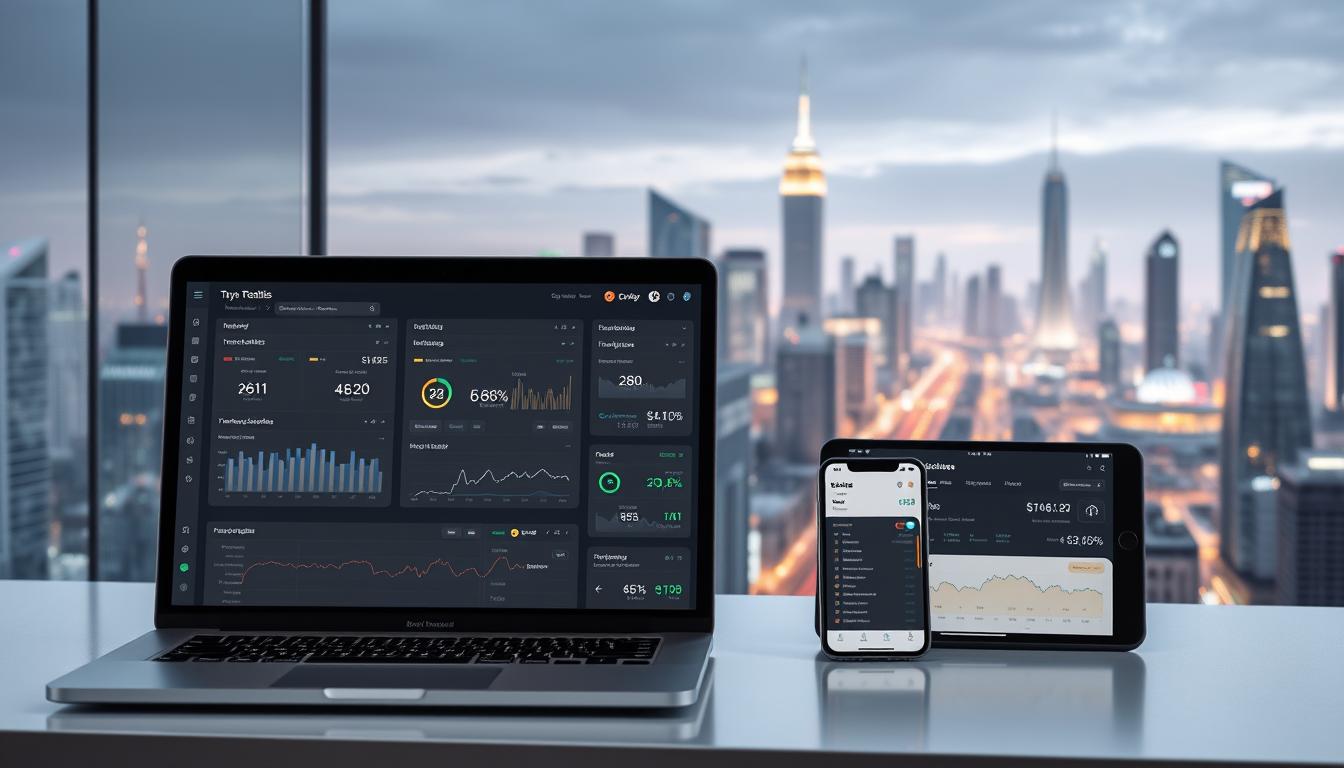Now Reading: Cryptocurrency Market Manipulation Detection Techniques & Red Flags
- 01
Cryptocurrency Market Manipulation Detection Techniques & Red Flags
Cryptocurrency Market Manipulation Detection Techniques & Red Flags

Digital asset markets face growing challenges as financial crimes surge globally. In 2023, U.S. investors lost nearly $4 billion to crypto-related scams—a 53% jump from 2022. Regulatory agencies now demand stronger safeguards, with fines exceeding $5.8 billion last year for weak anti-money laundering (AML) controls.
These risks highlight why proactive monitoring matters. Sophisticated schemes often involve coordinated trading patterns, fake volume spikes, and rapid price distortions. Without proper oversight, bad actors exploit decentralized systems to move illicit funds. Reports show exchanges processed over $2.3 billion in suspicious transactions during 2020 alone.
Effective protection requires understanding both technical signals and behavioral patterns. Advanced analytics now track wallet movements, trade timing anomalies, and social media pump campaigns. Compliance teams combine blockchain forensics with traditional fraud detection methods to spot irregularities.
Key Takeaways
- Financial losses from digital asset scams grew by 53% in one year
- Regulators issued record fines for insufficient AML controls in 2023
- Blockchain analysis tools help trace suspicious transaction chains
- Unusual trading volumes often precede price manipulation attempts
- Multi-layered detection systems improve fraud prevention
Introduction to Cryptocurrency Market Manipulation
Digital currencies operate through peer-to-peer networks, cutting out traditional banks. These systems record payments in shared ledgers visible to all users but mask participant identities. This setup creates opportunities for illicit activities, as shown by a 1800% jump in crypto-linked money laundering between 2018 and 2019.
Fraudsters exploit three main weaknesses in these systems. First, irreversible payments prevent fund recovery after unauthorized transfers. Second, fake trading volumes can distort asset values through coordinated pump-and-dump schemes like those detailed in recent blockchain studies. Third, privacy coins complicate transaction tracking.
Compliance teams now use specialized tools to spot suspicious patterns. Unusual payment clusters between unlinked wallets often signal money movement attempts. Regulatory agencies require exchanges to implement AML protocols verifying user identities for large transactions.
These measures help combat financial crimes but require constant updates. As criminals develop new methods, detection systems must analyze blockchain data in real-time. Effective protection combines technology with human oversight to identify evolving threats.
Cryptocurrency market manipulation detection techniques and red flag indicators
Global regulators have identified recurring financial behaviors through FATF case studies analyzing 100+ laundering incidents. These patterns often involve repeated small transfers below reporting thresholds or sudden large movements between wallets. Such tactics aim to obscure fund origins while bypassing AML protocols.

- Frequent deposits followed by immediate withdrawals without trading activity
- Geographic hops moving assets from regulated exchanges to platforms with lax oversight
- Unusual transaction timing matching known market trend anomalies
A 2022 South Korean phishing scheme illustrates these risks. Criminals converted stolen funds through rapid-fire trades across four exchanges. They executed 87 transactions in 48 hours before cashing out through privacy-focused wallets.
Modern detection systems track wallet clusters and velocity metrics. Compliance teams combine blockchain explorers with behavioral models to spot abnormal flows. Cross-platform monitoring now flags accounts showing sudden spikes in transfer frequency or destination changes.
Effective systems also analyze counterparty relationships. Transactions between unrelated entities or newly created wallets often precede fraudulent exits. By mapping these connections, institutions can intercept illicit movements before final settlement.
The Role of AML Compliance in Crypto Regulation
Financial authorities now prioritize anti-money laundering systems as digital asset platforms expand. Robust AML regulations act as gatekeepers against illicit flows, with 2023 fines showing regulators’ zero-tolerance stance.
FBI Reports and Regulatory Fines in 2023
The FBI tracked $3.94 billion in U.S. scam losses last year—enough to buy 12,000 Bitcoin at current prices. Penalties hit record levels, with exchanges paying $5.8 billion for weak transaction checks. One firm faced a $4.3 billion settlement for ignoring suspicious wallet transfers.
AML Policies and Their Importance
Effective programs combine three layers:
- Real-time monitoring of cross-border transfers
- Mandatory identity checks for high-risk accounts
- Automated alerts for repetitive deposit patterns
These measures help platforms spot money movement schemes before withdrawals occur. Institutions with advanced compliance systems reduced fraud exposure by 68% in 2023 compared to peers.
Regulators now require annual audits of AML protocols. Firms must prove they track fund sources across mixed wallets and privacy coins. Failure to update systems risks license revocations beyond financial penalties.
Key Red Flags in Crypto Money Laundering
Financial institutions face escalating challenges in tracking illicit flows through blockchain networks. Sophisticated schemes often leave digital footprints that trained analysts can identify through behavioral anomalies and transactional irregularities.

Unusually Large Transactions and Repetitive Patterns
Sudden transfers exceeding typical account activity levels often trigger alerts. A user moving $250,000 through five wallets in 12 hours—despite having $5,000 in prior monthly activity—would raise immediate concerns. These money movements frequently involve round-number amounts like 10 BTC or 50 ETH, avoiding fractional values that suggest genuine trading.
Pattern-based red flags include repeated deposits followed by instant withdrawals. One European exchange recently froze accounts showing 47 identical transfers of 2.3 XMR (Monero) within 72 hours—a textbook structuring attempt.
Geographic and Identity Anomalies
Cross-border transfers between high-risk jurisdictions account for 38% of suspicious activity reports. Transactions originating from countries with lax regulations often route through multiple platforms before reaching destination wallets.
Identity mismatches compound these risks. A 2023 case revealed a user claiming residence in Texas while operating IP addresses from Belarus and Nigeria. Such discrepancies frequently accompany fraud schemes using stolen credentials to bypass KYC checks.
Platforms now flag accounts interacting with privacy coins or unregistered entities. Last year, this approach helped intercept $4.8 million linked to a Singaporean shell company laundering funds through Zcash transactions.
Technological Solutions for Market Manipulation Detection
Modern security systems now deploy artificial intelligence to combat evolving financial threats. These tools process millions of data points daily, identifying irregularities invisible to human analysts.

AI and Machine Learning in Fraud Prevention
Machine learning models analyze historical data to predict suspicious patterns. Unlike rule-based systems, they adapt to new tactics like wash trading or spoofing—methods often hidden in complex transaction chains.
Key advantages include:
- Real-time analysis of cross-exchange trading activity
- Detection of coordinated wallet interactions across platforms
- Automated alerts for sudden volume spikes in low-liquidity assets
Advanced systems like real-time AI monitoring tools track social sentiment alongside blockchain movements. This dual approach exposed a 2023 scheme where influencers promoted obscure tokens before orchestrated sell-offs.
Behavioral analytics add another layer of protection. By establishing baseline patterns for user accounts, algorithms flag deviations like:
- Unusual login locations paired with large withdrawals
- Rapid asset conversions between stablecoins and privacy coins
- Repeated test transactions before major fund movements
These technologies continuously refine their detection models. Each new fraud case trains systems to recognize emerging threats faster than manual reviews allow—critical in fast-moving digital asset markets.
Customer Due Diligence and KYC in Cryptocurrency
Robust identity checks serve as the first defense against financial crimes in digital asset platforms. Modern KYC procedures require users to submit government-issued IDs, utility bills, and sometimes biometric data. This process helps institutions verify legitimate activity while filtering out bad actors.

- Document authentication through AI-powered scanners
- Real-time database checks against sanctions lists
- Liveness detection to prevent photo spoofing
| Basic CDD | Enhanced CDD |
|---|---|
| Standard ID verification | Source of wealth documentation |
| Monthly transaction reviews | Real-time activity monitoring |
| Low-risk jurisdiction checks | PEP (Politically Exposed Person) screening |
High-risk accounts demand extra scrutiny. Users moving assets through privacy coins or operating across multiple exchanges often trigger enhanced due diligence protocols. A 2023 FinCEN report showed 72% of flagged accounts involved cross-platform transactions.
Ongoing monitoring completes the compliance cycle. Systems track changes in user behavior like sudden large withdrawals or altered trading patterns. Platforms combining blockchain analysis with AML tools reduced fraudulent account creation by 61% last year.
Balancing privacy and security remains critical. Encrypted storage solutions now protect personal information while allowing regulators limited access during investigations. This approach maintains user trust while meeting strict compliance requirements.
Risk Assessment Techniques for High-Risk Jurisdictions
Identifying financial threats requires precise geographic risk evaluation. Platforms now use dynamic scoring systems to rank regions by AML effectiveness and crime rates. These models track regulatory alignment with FATF standards and enforcement consistency across borders.
Transactions involving areas with weak digital asset regulations demand layered verification. Users operating through unlicensed exchanges in sanctioned territories often show mismatched IP addresses and residency claims. A 2023 FinCEN alert highlighted $1.2 billion moved through Caribbean platforms lacking transaction monitoring.
Effective programs combine three approaches:
- Real-time mapping of wallet clusters to geopolitical risk zones
- Automated flags for sudden activity spikes in restricted areas
- Quarterly reviews of local regulations and enforcement actions
Enhanced due diligence applies when money movements involve privacy-focused coins or newly formed entities. Compliance teams now require source-of-funds documentation for transfers exceeding $10,000 from high-risk jurisdictions. This process reduced suspicious withdrawals by 44% at major U.S. exchanges last year.
Continuous monitoring adapts to evolving threats. Systems analyze geopolitical events and regulatory shifts that could enable laundering through decentralized networks. Balancing oversight with innovation remains critical as global standards evolve.














